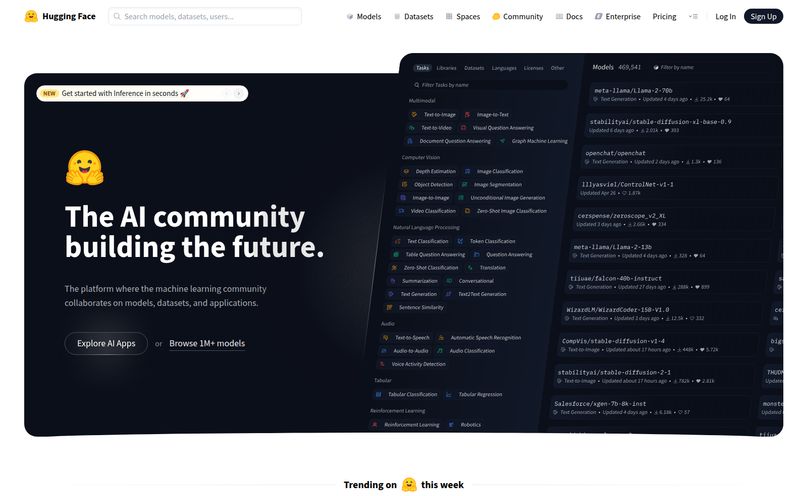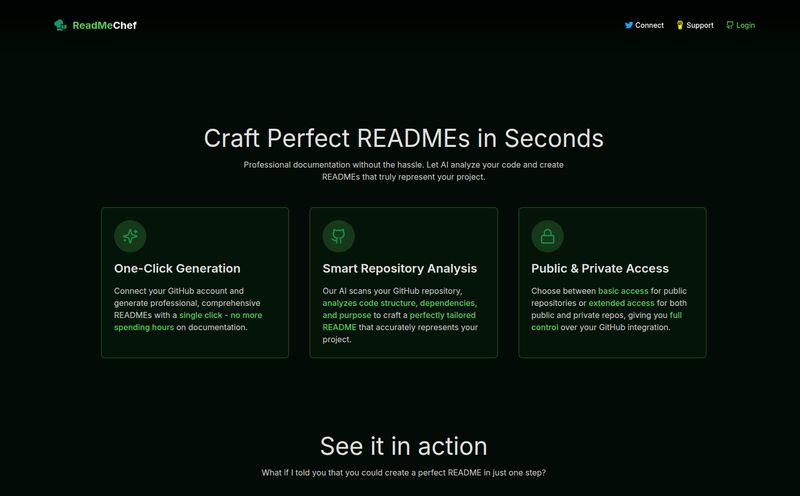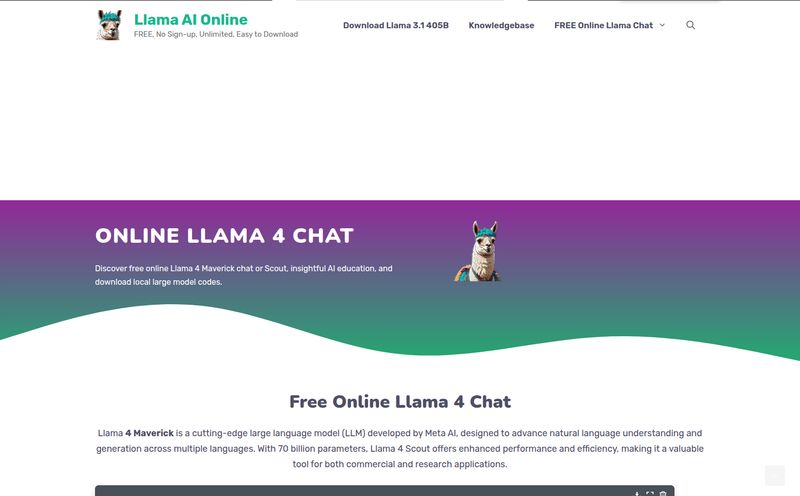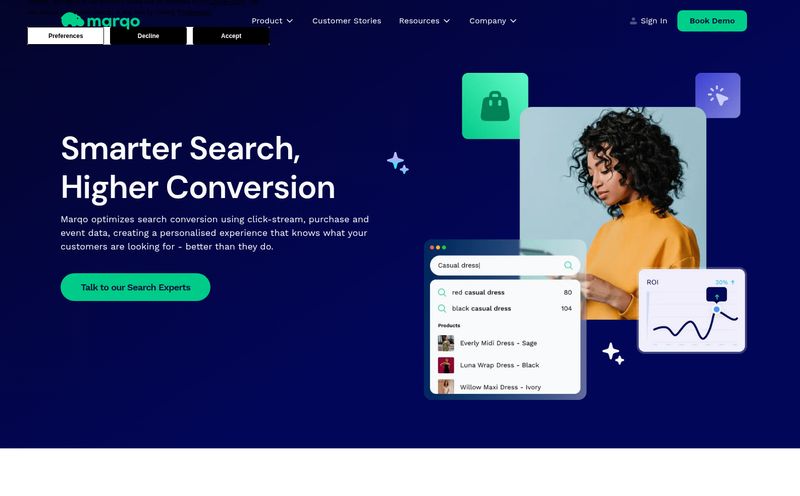I’ve been in the SEO and traffic-gen game for years, and I've seen trends come and go. The latest gold rush? Wrapping a cool UI around a powerful LLM like GPT-4. Everyone’s doing it. And I get it! The excitement of building an app that can write, code, or create images is infectious. You build your MVP, you get your first few users, and everything feels amazing. Until the first OpenAI bill arrives.
Suddenly, you're staring at a spreadsheet, trying to figure out which user generated which costs. It’s a mess of API logs, token counts, and manual calculations. That initial spark of creation gets buried under an avalanche of… well, accounting. It’s the digital equivalent of trying to split a complicated dinner bill with 50 friends. A total headache.
This is precisely the pain point a new tool called SaaSpec claims to solve. I stumbled upon it recently, and its premise is so simple, so direct, that it immediately caught my attention. It promises to track user-specific LLM API costs and pipe them right into Stripe invoices. Could it be this easy? Let's take a look.
So, What Exactly Is SaaSpec?
Let’s cut through the jargon. SaaSpec is essentially a cost-tracking middleman for your AI application. If you’re building a SaaS product that uses an LLM API (right now, specifically OpenAI's) and you want to bill your users based on their actual usage—the classic pay-as-you-go model—SaaSpec is built for you.
Think of it like a smart electricity meter for each user in your app. Instead of one giant bill from the power company (OpenAI), you get a detailed breakdown of who used what. Then, it helps you send the right bill to the right person through Stripe. It’s not trying to be an all-in-one platform. It does one thing: it connects API usage to user invoices. And honestly, in a world of bloated software, that kind of focus is refreshing.
The Problem It Solves Is The Manual Billing Nightmare
If you've never tried to implement usage-based billing, you might be wondering what the big deal is. Let me paint you a picture. Without a tool like SaaSpec, the process is a nightmare that drains your most valuable resource: time.
The Soul-Crushing Grind of Manual Tracking
First, you have to log every single API call and associate it with a specific user ID. Then, at the end of the month, you pull all those logs. You have to parse them, calculate the token costs for both prompts and completions (which are often priced differently), and sum it all up for every single user. You're basically writing custom scripts and running database queries that feel more like forensic accounting than software development. It’s tedious, error-prone, and it takes you away from what you should be doing—improving your actual product.
Why Per-User Tracking Is The Fairer Way
The alternative is a flat-rate subscription. But that’s not always fair, is it? Your power user who generates 100,000 tokens a day pays the same as the person who logs in once a month to ask a single question. A pay-as-you-go model feels more transparent and equitable. It allows you to offer a lower barrier to entry, letting users pay only for the value they receive. SaaSpec is the plumbing that makes this fairer model possible without you having to become a full-time plumber.

Visit SaaSpec
How SaaSpec Actually Works
The workflow is pretty straightforward, which is a major point in its favor. There are no convoluted dashboards or a million settings to configure. It boils down to a three-step dance.
- It Tracks the Costs: You integrate SaaSpec into your application, and it keeps a running tab on the token costs for each of your users. It monitors their interactions with the OpenAI API and does the cost attribution for you.
- It Exports the Data: At the end of your billing cycle, you can export a clean CSV file. This file contains the user data and their total accrued costs for that period. I personally like that you get a raw data file—it gives you a sense of control and a paper trail if you ever need it.
- It Creates Stripe Invoices: This is the magic button. You take that CSV and use it to generate invoices in Stripe. It automates the final, most tedious part of the process, ensuring your users are billed accurately for their consumption. For anyone who has spent an afternoon manually creating invoices in Stripe, this feature alone is a godsend.
My Honest Take: The Good, The Bad, and The Nitty-Gritty
Alright, no tool is perfect. After poking around and thinking about how I’d use it in a real project, here’s my breakdown. No sugar-coating.
What I Genuinely Like
The biggest pro is its simplicity. It’s a purpose-built tool, not a bloated platform trying to solve every problem for every business. It saves developer time, which is almost always more valuable than a modest monthly subscription. The integration with Stripe is also a huge plus. Most developers and SaaS builders are already in the Stripe ecosystem, so it fits right into the existing stack without much friction. It’s just one less thing to worry about, and that's huge.
Where It Could Improve
The most obvious limitation is that it only supports OpenAI models right now. With competitors like Anthropic's Claude and Google's Gemini gaining serious ground, this is a significant drawback. If your app is designed to be model-agnostic, SaaSpec won’t work for you... yet. I'm hoping they expand this soon.
Also, the process of exporting a CSV and then converting it feels a bit... manual. It’s a massive improvement over doing everything from scratch, dont get me wrong, but a direct API-to-API integration with Stripe would be the holy grail. It feels like a necessery but slightly clunky step in an otherwise smooth process.
The All-Important Question: SaaSpec Pricing
This is often the dealbreaker, but SaaSpec keeps it as simple as its features. The pricing is refreshingly straightforward.
| Plan | Cost |
|---|---|
| Get Started | $30.00 per month |
That’s it. No complicated tiers based on user numbers, revenue, or feature gates. It's a flat $30 a month. When you consider that a developer’s time can easily be worth $100/hour or more, the math is pretty clear. If SaaSpec saves you even a single hour of work per month, it has paid for itself three times over. For any serious project, this price is a no-brainer.
Who Is This Tool Really For?
Let's be real, SaaSpec isn't for everyone. If you're a massive enterprise with a whole team dedicated to billing infrastructure, you've probably built a custom solution already. But if you fall into one of these categories, you should pay attention:
- Indie Hackers: If you're a solo founder or a small team, your time is everything. This is a perfect tool to get your MVP to market with usage-based billing from day one.
- Early-Stage Startups: It allows you to validate a pay-as-you-go model without investing heavily in custom engineering.
- Developers Building Side Projects: Want to launch a cool AI tool on the weekend? SaaSpec handles the boring part so you can focus on the fun stuff.
Final Thoughts: A Focused Fix for a Prickly Problem
SaaSpec isn't going to build your app for you. It's not going to find you customers. But what it does, it does well. It takes the painful, tedious, and error-prone task of usage-based billing for LLM apps and makes it… manageable. It turns a multi-day engineering headache into a simple monthly process.
While I'm eager to see support for other models and maybe a more direct Stripe integration, its current form is still a massive value-add. It’s a sharp, focused tool that empowers small builders to compete with larger players by offering fair, flexible pricing models. And in my book, anything that helps the little guy is worth a closer look.
Frequently Asked Questions (FAQ)
- How does SaaSpec track user costs?
- It integrates with your application to monitor API calls made by individual users to the OpenAI API. It then calculates the token costs associated with those calls based on OpenAI's pricing structure.
- Does SaaSpec work with models other than OpenAI?
- As of now, no. The documentation and site state that it currently only supports OpenAI models. This is the main limitation to be aware of.
- Is the $30/month fee all-inclusive?
- The $30/month fee is for the SaaSpec service itself. You are still responsible for paying your own OpenAI API bill and any transaction fees from Stripe.
- Can I use SaaSpec without Stripe?
- While you could technically use the exported CSV of user costs to create invoices in another system, the core automated workflow is designed specifically for Stripe.
- How much technical skill do I need to set it up?
- You'll need to be a developer comfortable with integrating an API or SDK into your application's backend. It's not a no-code tool, but it's designed to be straightforward for someone with programming experience.
- What happens if my user base grows significantly?
- The pricing is flat, so your SaaSpec cost won't change as your user base grows. This makes it very scalable from a cost perspective for early-stage companies.



